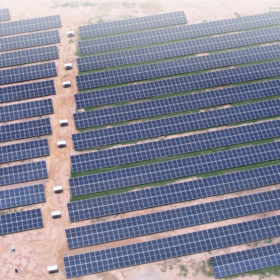As India marches forward on its ambitious path to achieve 500 GW of renewable energy capacity by 2030, the Union Budget 2025 has placed a strong emphasis on the solar energy sector. With climate change and energy security at the forefront of global concerns, the government has unveiled a series of policy measures and incentives designed to accelerate the adoption of solar power. Here’s a comprehensive look at what the Budget offers for the solar industry and how it could shape the future of clean energy in India.
1. Increased funding for renewable energy projects
The Union Budget 2025 has significantly boosted funding for renewable energy projects, with a substantial focus on solar power. A dedicated INR 10,000 crore fund has been announced for the development of solar infrastructure, including large-scale solar parks, rooftop solar installations, and off-grid solar solutions. This increased financial support is expected to attract private investment and bolster investor confidence in the sector.
2. Extension of the production-linked incentive (PLI) scheme
The Production-Linked Incentive (PLI) scheme for solar module manufacturing has been extended for another five years, with an enhanced outlay of INR 24,000 crore. This extension aims to reduce India’s dependence on imported solar panels and promote domestic manufacturing. The move is expected to create a robust ecosystem for solar equipment production, generate employment, and lower the cost of solar installations.
3. Customs duty reductions on critical components
To make solar projects more cost-effective, the government has reduced customs duties on critical components such as solar inverters, batteries, and mounting structures. Additionally, customs duties on raw materials like silver paste and EVA sheets, essential for solar panel manufacturing, have been waived. These reductions are likely to lower overall project costs, making solar energy more competitive with traditional energy sources.
4. Focus on rooftop solar and decentralized energy systems
The Budget has introduced a new scheme, Surya Ghar Yojana 2.0, aimed at installing rooftop solar systems in 10 million households over the next three years. The scheme offers a subsidy of up to 40% for installations and includes provisions for low-interest loans to encourage residential adoption. This initiative is expected to reduce the burden on the grid and promote energy self-sufficiency at the grassroots level.
5. Green hydrogen and solar integration
A significant allocation of INR 2,000 crore has been made for the development of green hydrogen projects, which are closely linked to solar energy. Solar power will play a crucial role in producing green hydrogen through electrolysis. The government has also announced tax incentives for companies investing in solar-powered green hydrogen plants, further strengthening the synergy between the two sectors.
6. Boost to research and development (R&D)
To foster innovation in the solar sector, the Budget has allocated INR 1,500 crore for R&D in advanced solar technologies, including perovskite solar cells, bifacial modules, and energy storage solutions. This funding will enable Indian researchers and startups to develop cutting-edge technologies that can enhance the efficiency and affordability of solar power.
7. Streamlining of approval processes
Addressing a key pain point for solar developers, the Budget 2025 introduces a single-window clearance system for solar projects. This streamlined process is expected to reduce delays and lower administrative costs, making it easier for developers to execute projects on time.
8. Tax benefits for solar developers
To incentivize investments in the solar sector, the government has extended tax holidays for solar power projects by another five years. Additionally, solar developers will now be eligible for accelerated depreciation benefits, reducing their tax liabilities and improving project viability.
9. Focus on solar waste management
With the rapid growth of the solar industry, the issue of solar waste management has gained prominence. The Budget has introduced a new policy framework for the recycling and disposal of end-of-life solar panels. This initiative aims to create a circular economy in the solar sector, ensuring sustainable growth.
10. Strengthening grid infrastructure
The Budget has allocated INR 5,000 crore for the modernization and expansion of grid infrastructure to accommodate the increasing share of solar energy. This includes investments in smart grids, energy storage systems, and grid stability technologies. A robust grid infrastructure is essential for integrating intermittent solar power into the energy mix.
Conclusion
The Union Budget 2025 has laid a strong foundation for the growth of the solar industry in India. By addressing key challenges such as high costs, reliance on imports, and grid integration, the government has demonstrated its commitment to making solar energy a cornerstone of India’s energy transition. These policy changes are expected to create a ripple effect, driving innovation, creating jobs, and accelerating the adoption of clean energy.
For the solar industry, the Budget is not just a financial plan but a roadmap to a sustainable future. As stakeholders gear up to capitalize on these opportunities, the solar sector is poised to shine brighter than ever before.
The views and opinions expressed in this article are the author’s own, and do not necessarily reflect those held by pv magazine.
This content is protected by copyright and may not be reused. If you want to cooperate with us and would like to reuse some of our content, please contact: editors@pv-magazine.com.








By submitting this form you agree to pv magazine using your data for the purposes of publishing your comment.
Your personal data will only be disclosed or otherwise transmitted to third parties for the purposes of spam filtering or if this is necessary for technical maintenance of the website. Any other transfer to third parties will not take place unless this is justified on the basis of applicable data protection regulations or if pv magazine is legally obliged to do so.
You may revoke this consent at any time with effect for the future, in which case your personal data will be deleted immediately. Otherwise, your data will be deleted if pv magazine has processed your request or the purpose of data storage is fulfilled.
Further information on data privacy can be found in our Data Protection Policy.